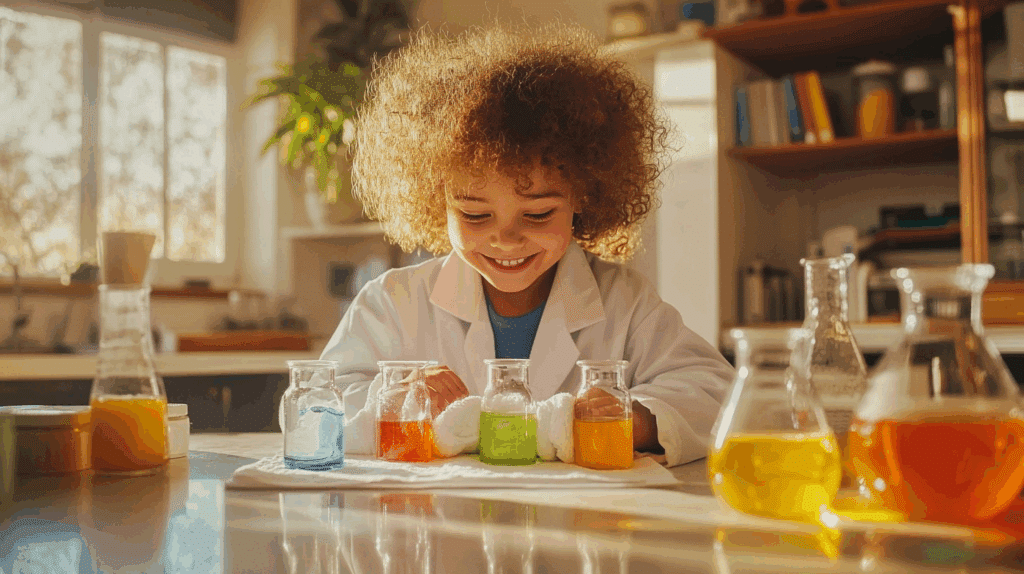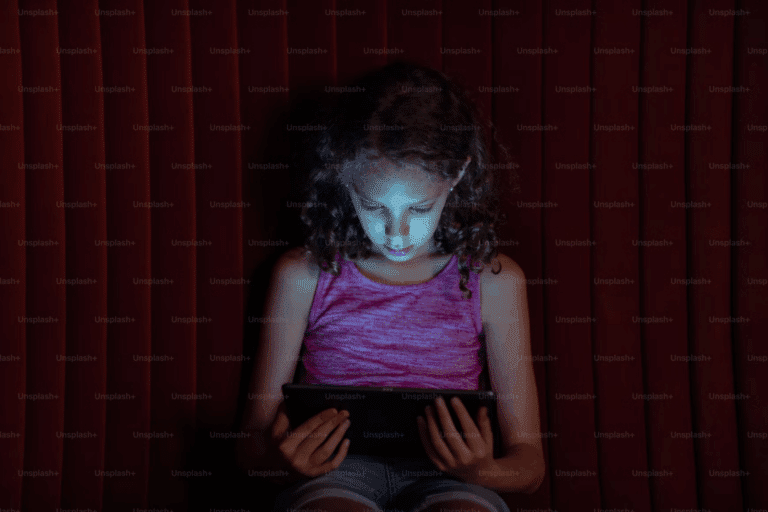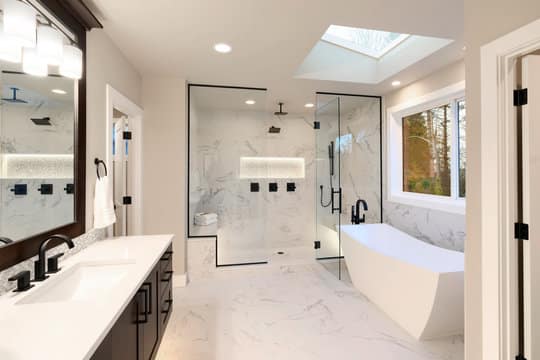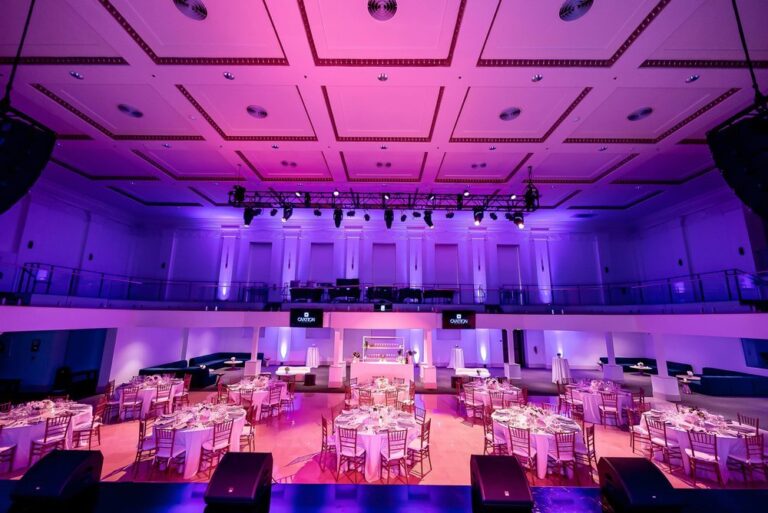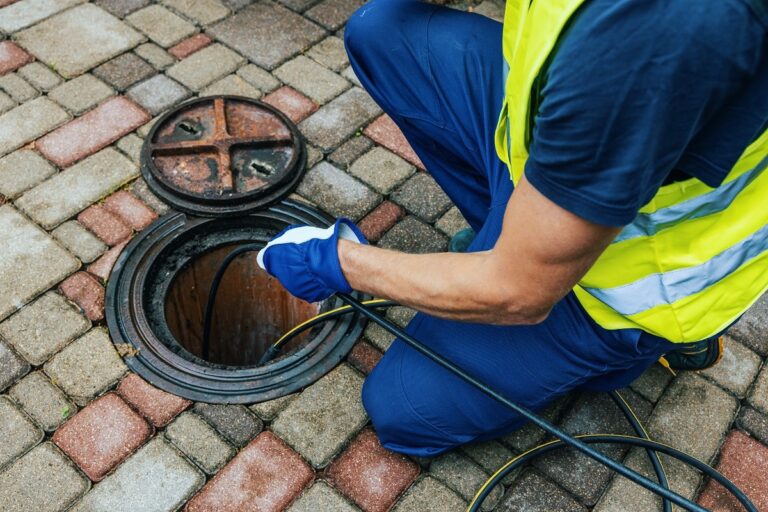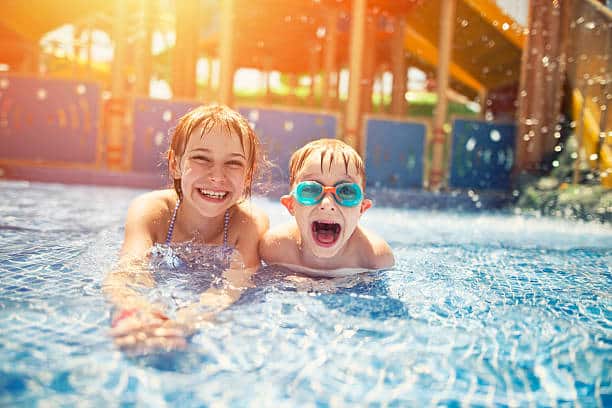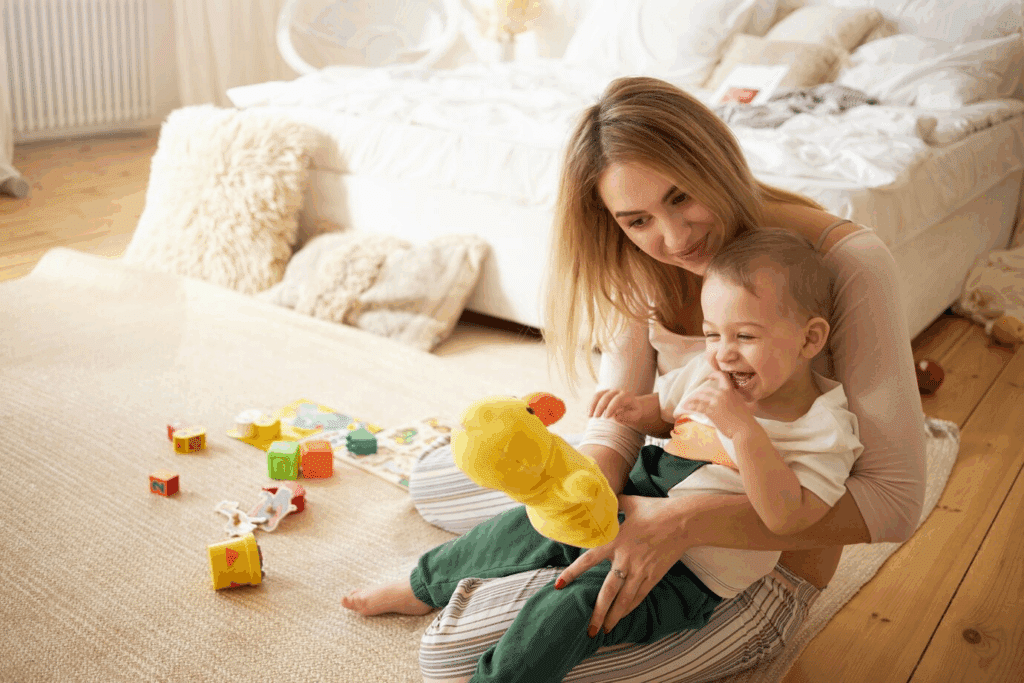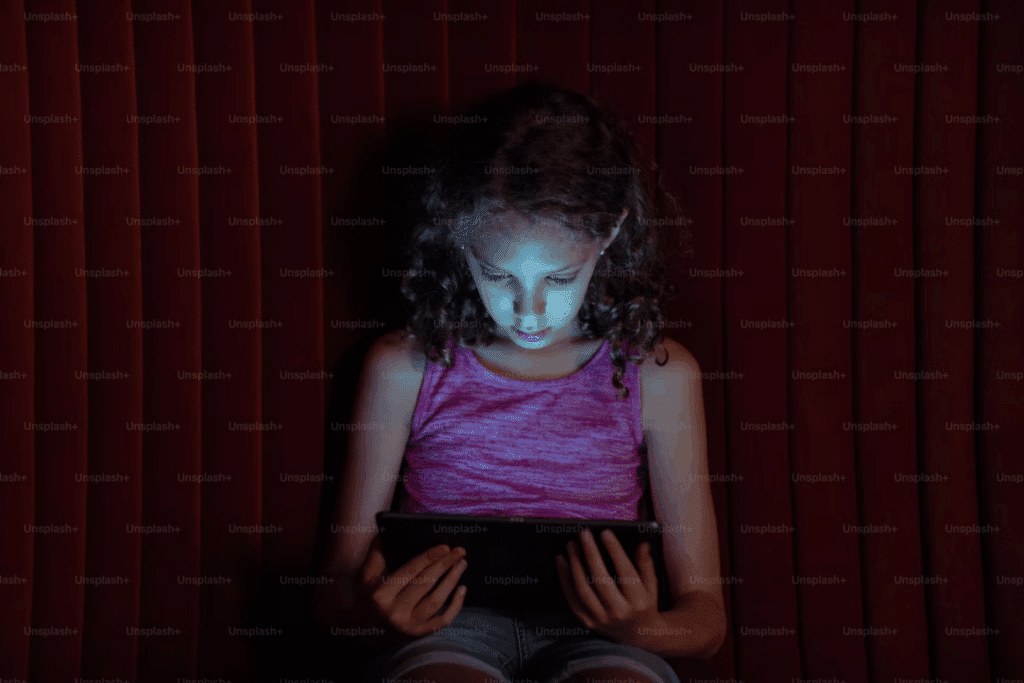Getting kids interested in science can be tough. They often find science facts boring and hard to follow. Parents and teachers struggle to find fun ways to teach basic science concepts that will actually stick with children.
A simple yet fun activity turns basic science into a colorful show kids love.
This walking rainbow experiment uses common household items to teach about water movement and color mixing.
This post will walk readers through setting up this activity, explaining the science in simple terms, and sharing tips for making this experiment work perfectly every time.
Walking Rainbow Experiment
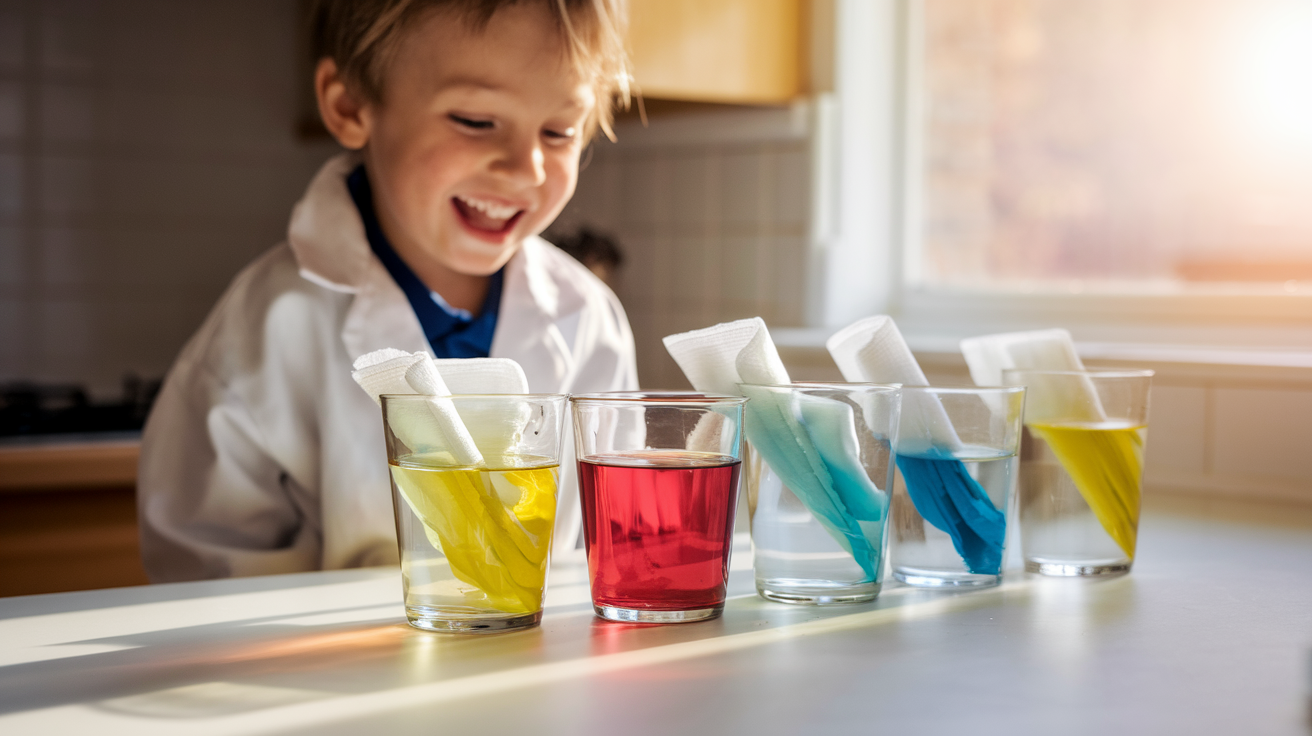
The Walking Rainbow Experiment shows how water moves between containers through paper towels. This process, called capillary action, creates a beautiful display of colors that seems to walk from one cup to another.
The setup involves placing six or seven clear cups in a circle or line. Every other cup gets filled with water and food coloring (red, yellow, and blue). The empty cups stay between the colored ones. Folded paper towel strips connect all cups, with each end dipped into adjacent containers.
Over several hours, the colored water climbs up the paper towels and moves into the empty cups. As different colors meet in the middle cups, they mix to form new colors.
This simple experiment demonstrates both water transportation and color theory in one fascinating display that changes throughout the day.
Materials You’ll Need for Your Walking Rainbow
Setting up the Walking Rainbow Experiment requires just a few common household items. The beauty of this activity lies in its simplicity.
Most of these items are probably already in your kitchen or supply closet. If not, a quick trip to a local store will get you everything you need. The low cost also makes this an ideal group activity for classrooms or play dates.
| Item | Purpose |
|---|---|
| 7 clear glasses | To clearly observe water movement and color blending |
| Paper towels (6 strips) | Bridges for capillary action and transport water between the glasses |
| Water | The primary liquid used in the experiment |
| Food coloring (red, yellow, blue) | Makes the movement and mixing of water visible |
| Spoon (optional) | Helps stir the water and distribute color evenly |
Steps to Make the Walking Rainbow
Creating this color-mixing science activity is simple and uses items most people already have at home. Here are just a few easy steps to set up your walking rainbow.
STEP 1. Set the Stage with Your Glasses

Begin by lining up seven clear glasses in a straight row on a flat, stable surface. Position them close enough so that a paper towel can bridge one to the next without needing to stretch or hover.
This setup is crucial because if the glasses are too far apart, the water won’t “walk” properly. Think of it like building a colorful little bridge pathway for your experiment.
STEP 2. Fill and Color the Water

Take your 1st, 3rd, 5th, and 7th glasses and fill them each halfway with water. Leave the 2nd, 4th, and 6th glasses empty. Now bring out the food coloring.
Add 10 drops of red to the 1st and 7th glasses, 10 drops of yellow to the 3rd, and 10 drops of blue to the 5th. Use a spoon to stir each one until the colors are evenly mixed gently.
These bold colors will make it easier to track how the water moves from one glass to another.
STEP 3. Fold the Paper Towels Just Right
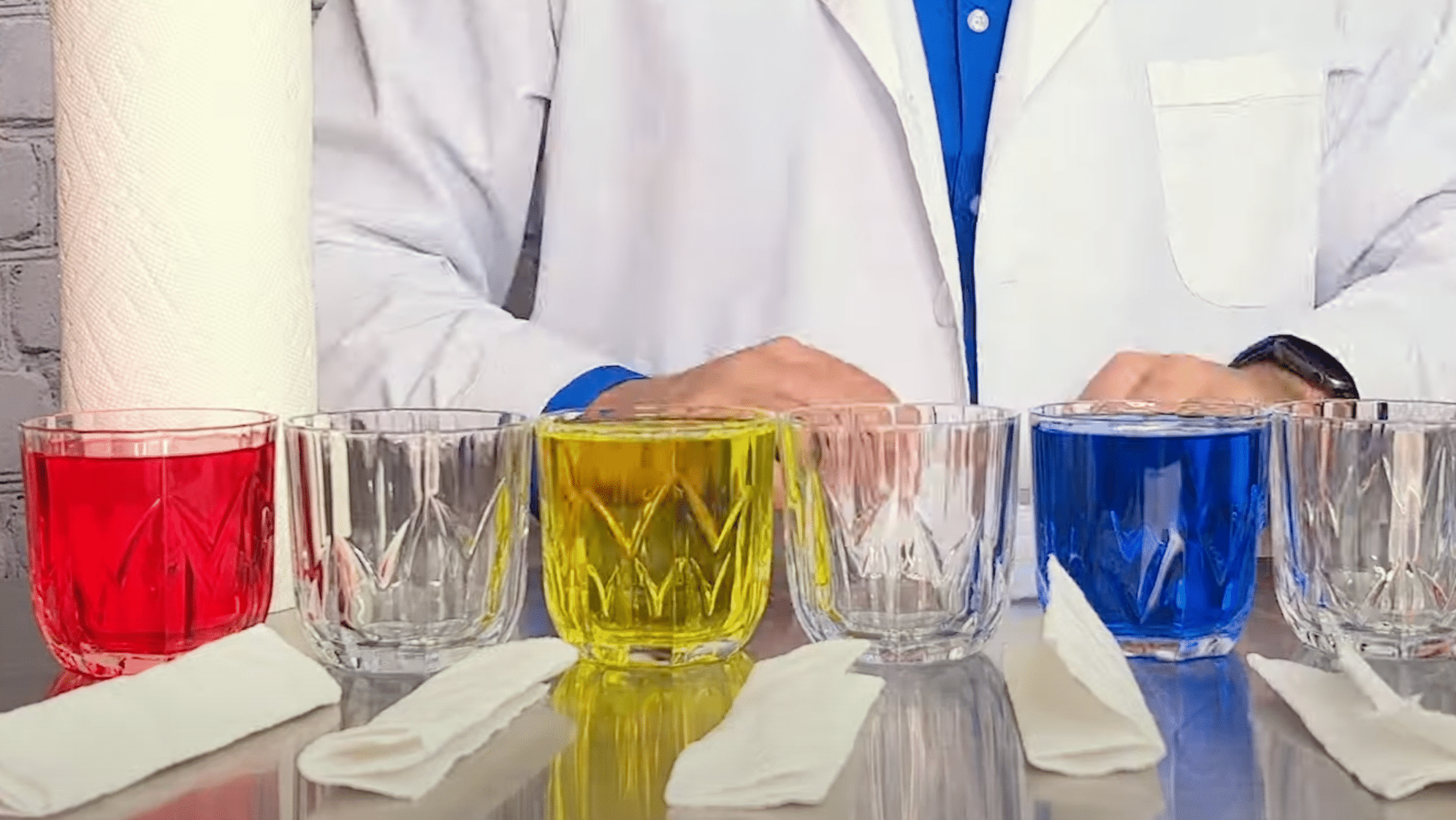
Tear off six strips of paper towel from your roll. If you’re using size-selective towels, that’s even better. Fold each strip lengthwise into thirds until you have a firm, narrow strip about finger-width. Fold it again in half to form a U-shape. You’re aiming for something that can rest with each end in a glass without sticking too far up in the air.
This helps the water travel more efficiently.
STEP 4. Connect All Glasses with Your Paper Bridges
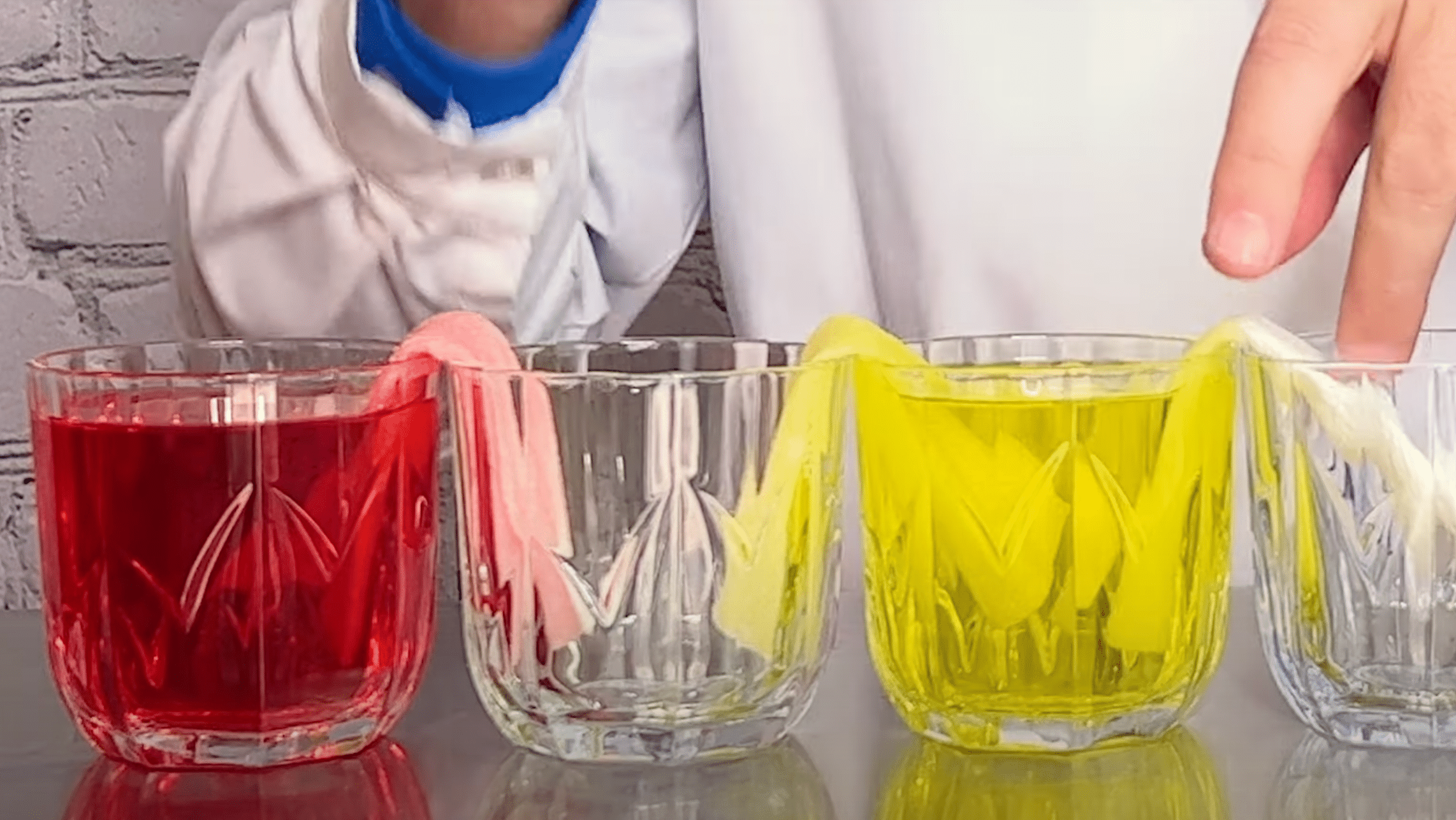
Carefully place one folded paper towel strip between each pair of glasses. Start between glasses 1 and 2, then 2 and 3, and continue until all seven glasses are connected.
Each end of the paper towel should be touching the inside bottom of the glasses so it can absorb the water properly. Within moments, you may see the colored water begin to travel up and across the strips.
It’s like giving the water little ramps to move along.
STEP 5. Observe the Magic of Capillary Action

Let the setup sit for at least 15 to 20 minutes without touching it. Slowly but surely, water will creep up one end of the towel and drip down into the next glass.
You’ll also notice the colors begin to mix. Red and yellow make orange, blue and yellow create green, and red and blue form purple.
This amazing display is thanks to capillary action, the same process plants use to move water from their roots to their leaves.
Creative Variations and Extensions
The standard Walking Rainbow Experiment serves as just a starting point. With a few changes to the basic setup, this activity can offer new learning experiences and different visual results.
Changing the layout of the cups creates one of the easiest variations. Instead of placing cups in a straight line, try arranging them in a circle, creating a complete rainbow loop. This circular setup shows how all colors eventually mix when given enough time.
Paper towels work well, but other materials absorb water too. Cotton string or yarn, thin strips of felt, or even specially cut pieces of cotton fabric can replace the paper towels.
Each material moves water at different rates, allowing children to compare which works fastest.
Different color combinations open up new possibilities:
- Try using non-primary colors to start with, like purple, orange, and green.
- Create a color theme based on seasons – autumn colors (red, orange, yellow) or spring pastels.
- Use food coloring drops to create different color intensities in each starting cup.
- Set up two separate rainbow systems side by side with different colors to compare results.
The experiment grows with the child’s interests and abilities. Younger children might enjoy watching colors mix, while older students can take measurements and make detailed observations.
A camera adds another dimension to this activity. Taking photos at regular intervals creates a visual record of changes. If the experiment is connected to a school project, these photos can become part of a presentation or display board.
Educational Benefits
The Walking Rainbow Experiment offers more than just visual appeal. It provides children with hands-on learning that covers multiple educational concepts at once.
This simple activity creates opportunities for discussion, observation, and learning that extend beyond the initial setup.
- Children learn about capillary action, the process that helps plants draw water from roots to leaves.
- The experiment demonstrates how primary colors (red, yellow, blue) combine to create secondary colors (orange, green, purple).
- It teaches patience as results develop over hours, not instantly.
- Kids practice making predictions about which colors will form in each cup.
- The activity builds observation skills as children watch the water “walk” up the paper towels.
- It introduces the basic scientific method: hypothesis, experiment, and results.
- The rainbow creation helps reinforce color recognition for younger children.
- It provides a concrete example of water movement that’s normally invisible.
- The experiment can prompt discussions about similar processes in nature, like how plants drink water.
Why This Experiment is a Peak of Creativity
The Walking Rainbow Experiment stands out as a perfect blend of science and art. What makes this activity special is how it turns basic scientific principles into a visually stunning display. As the colors slowly travel and mix, children experience both a science lesson and an art show rolled into one simple setup.
This experiment captures attention because it changes over time. Unlike many science activities that finish quickly, this one continues to develop for hours. The slow transfiguration keeps kids coming back to check on their creation throughout the day.
The Walking Rainbow connects to multiple STEM areas:
- Science: The experiment demonstrates capillary action, the same force that helps plants pull water from their roots up to their leaves. Children see this invisible process made visible.
- Technology: Students can document the changes using phones or tablets, creating time-lapse videos of the color movement.
- Engineering: The setup requires thoughtful design. The paper towel bridges must be positioned correctly, and the cups must be placed at the proper distances.
- Math: Children can measure water levels, track time between changes, and observe proportions of color mixing.
The Walking Rainbow also invites modification and experimentation. Children can try different cup arrangements, various colors, or other absorbent materials. These changes encourage critical thinking as kids predict and test how their adjustments might affect the outcome, fostering both creative thinking and scientific reasoning.
Wrapping It Up
This Walking Rainbow Experiment brings science to life with splashes of color and simple materials. We’ve seen how this activity teaches capillary action while creating a beautiful display that changes throughout the day.
This experiment matters because it makes abstract science concepts visible and tangible for children.
It converts learning from reading facts to seeing science happen right before their eyes.
What next? Try setting up this colorful experiment this weekend. Gather your cups, food coloring, and paper towels, then watch the magic unfold. Take photos of the changes and share them with friends or on social media. And don’t forget to ask children what they notice and wonder as the colors blend and move.

